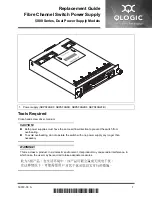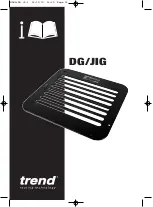
Warning: blade teeth are very sharp.
For
best cutting results ensure you use a blade
suited to the material and cut quality you need.
7. PARALLEL GUIDE FIXTURES
Slide the parallel guide (13) arm through both fixtures
to achieve the required cutting distance and tighten
both screws to lock into position.
8. BLADE GUIDE
Ensure the blade is located and runs smoothly in the
groove (See F) otherwise the pendulum function will
not work correctly and the blade will not be supported
during cutting.
9. PENDULUM ACTION CONTROL
The pendulum action varies the forward cutting angle
of the blade for increased cutting efficiency. This can
also be adjusted during no load running. Refer to the
chart 2 for more details. Do not use excessive blade
force when cutting with the pendulum action. The blade
cuts on the upward stroke only (See G).
Chart 2
1
Thin materials. Fine cuts. Tight
curves.
2
Hard materials, (e.g. steel &
chipboard)
3
Thick materials (e.g. wood) &
plastic
4
Fast cuts (e.g. softwood). Cutting
in the direction of the wood
grain.
10. BASE PLATE
Adjusting the angle of the base plate (10) enables bevel
cutting. The base plate must always be held firmly
against the materials being cut to reduce saw vibration,
blade jumping or blade breakage.
11. BASE PLATE ANGLE ADJUSTMENT
Using an Hex key (14). Loosen the bolts securing the
base plate (See H). For preset angles rotate so the
lines of the angle on the base plate and angle plate
(11) superposition at the desired angle (0°,15°,30°,45°)
(See I). For other mitre angles, rotate to your desired
angle (use a protractor scale). Following one of the
above procedures, hold the base plate in position and
firmly tighten the bolts to clamp the base plate at that
angle. Finally, check the angle and ensure the base
plate is firmly clamped. The angle markings on the base
plate are accurate for most general purposes but it is
E
F
G
H
M-WX460K-070416.indd 8
4/16/2007 2:37:14 PM






























